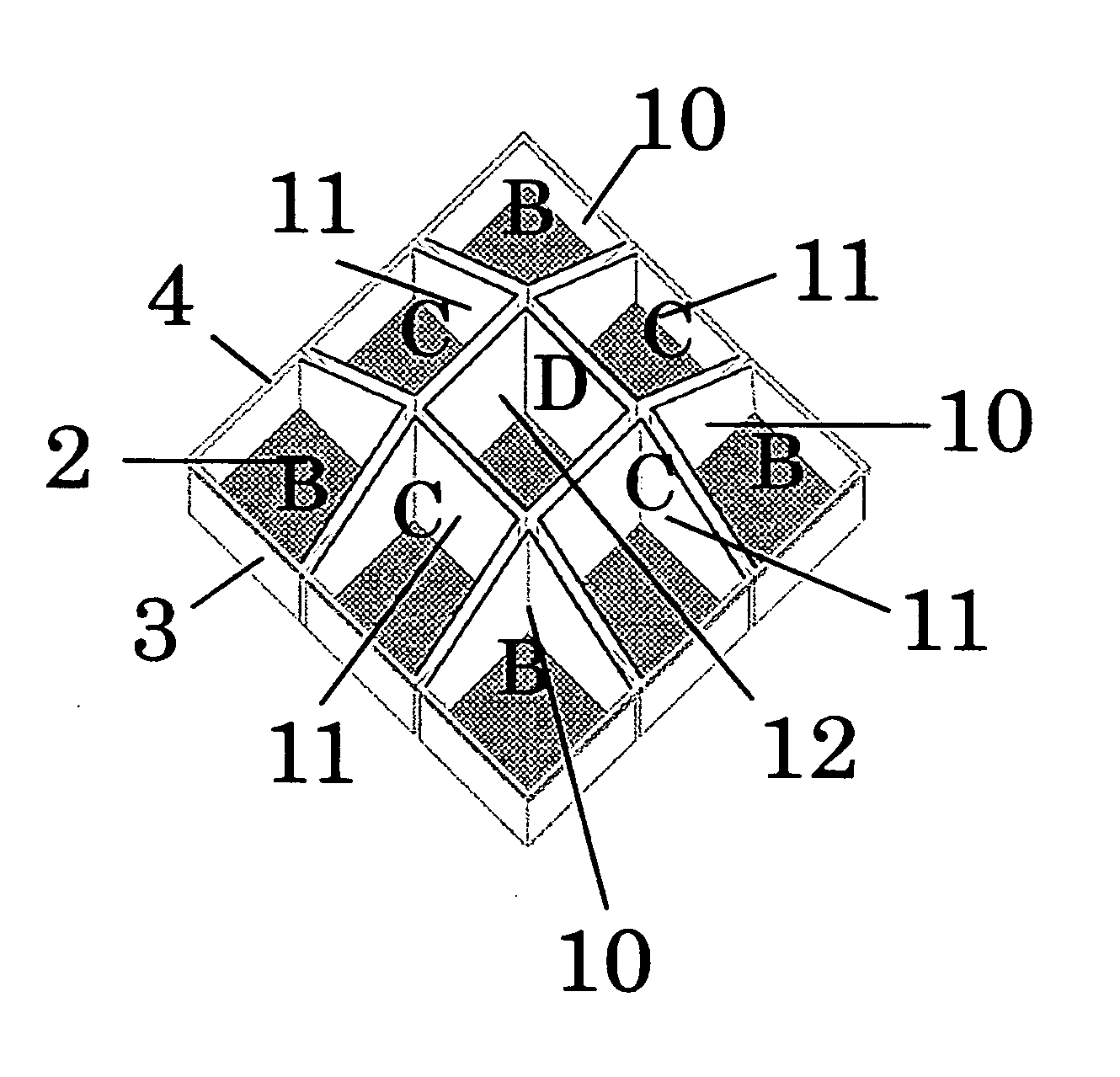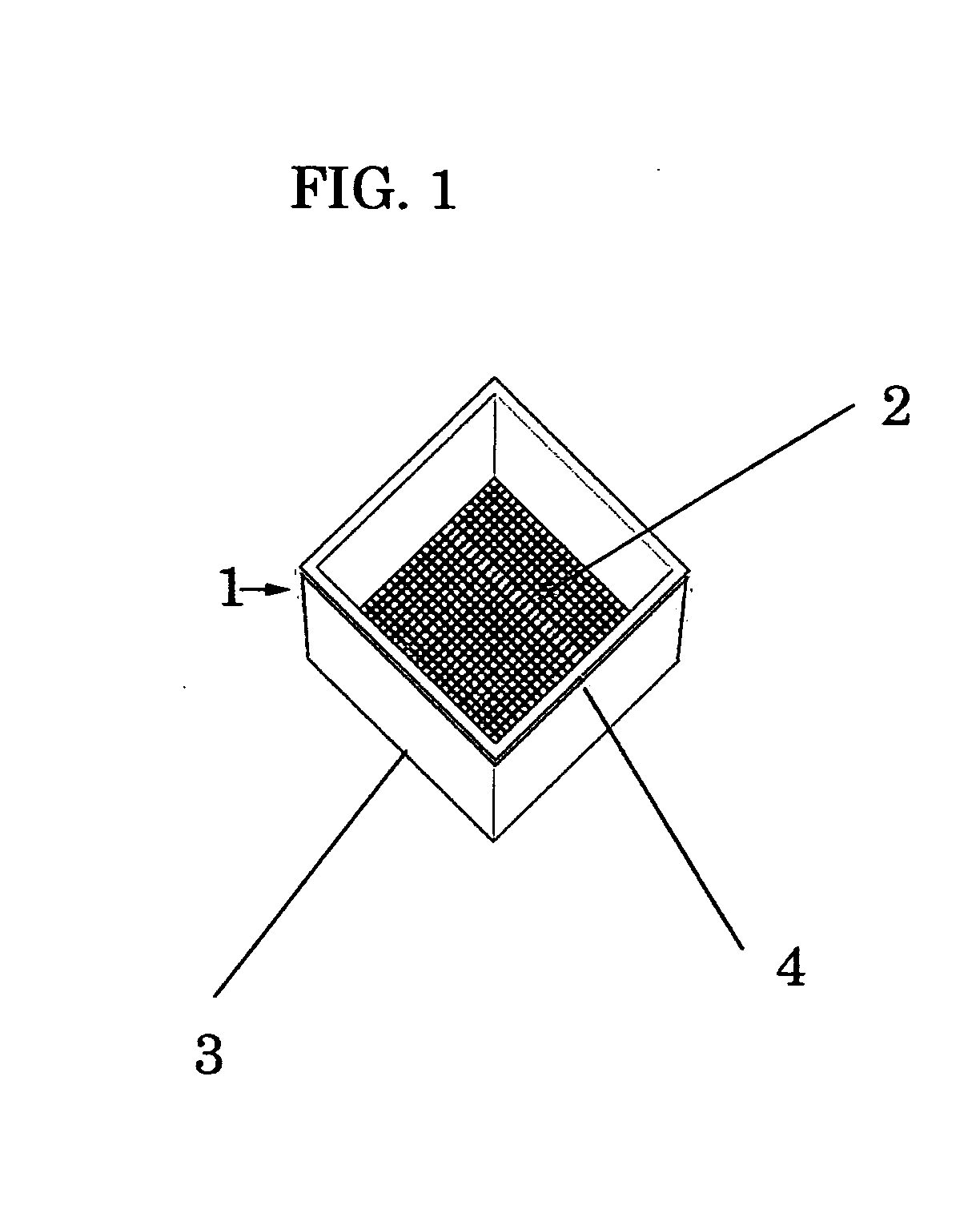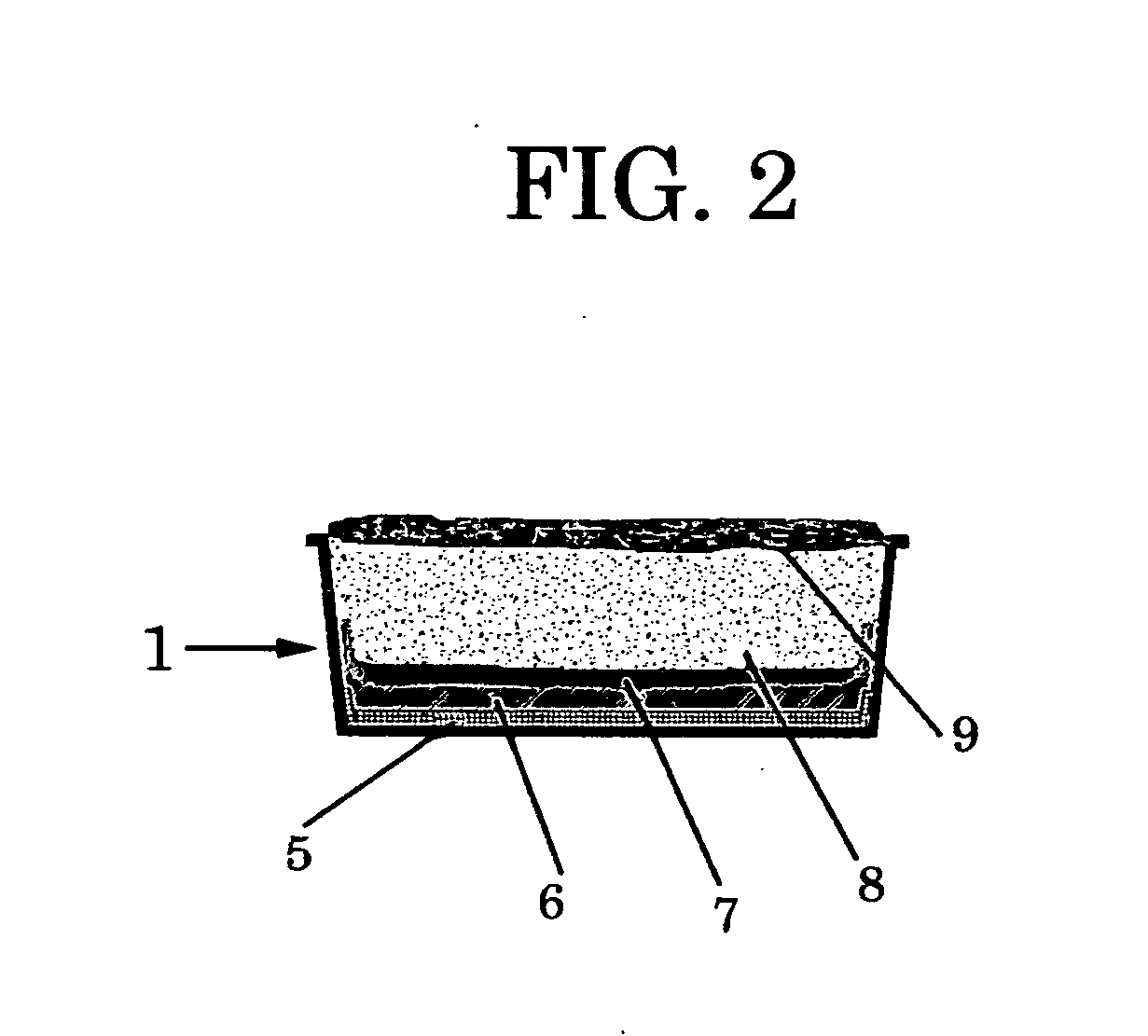Modular planter system
a planter system and modular technology, applied in the field of modular planter systems, can solve the problems of not being able to meet the needs of planters, planters or modular devices for vegetative cover on terraces, balconies, decks or roofs, and the use of systems or individual containers, etc., to reduce the saturated weight load, reduce heat island effects, and increase water retention
- Summary
- Abstract
- Description
- Claims
- Application Information
AI Technical Summary
Benefits of technology
Problems solved by technology
Method used
Image
Examples
Embodiment Construction
[0043] Detailed description of modular planter system The present invention relates to both terrestrial and roof applications of a modular planter system. The system combines existing products and their functionalities in new ways to achieve superior benefits described in the foregoing sections.
[0044] Previously, green roof modular panels (such as those described in U.S. Pat. No. 6,711,851 and U.S. Pat. No. 6,862,842) have been used for application to “green” roofs. While concerns for the water holding function for plant growth were addressed, other significant benefits regarding the maximization of storm water retention and atmospheric redistribution were not. The utilitarian approach taken by the former art which failed to account for the sometimes nuanced relations between root systems, water transport and retention, compaction, and ecological balance achieved with mimicry of vegetative stories—over, middle and under—to afford better plant survival. By using fabrics and plastics...
PUM
 Login to View More
Login to View More Abstract
Description
Claims
Application Information
 Login to View More
Login to View More - R&D
- Intellectual Property
- Life Sciences
- Materials
- Tech Scout
- Unparalleled Data Quality
- Higher Quality Content
- 60% Fewer Hallucinations
Browse by: Latest US Patents, China's latest patents, Technical Efficacy Thesaurus, Application Domain, Technology Topic, Popular Technical Reports.
© 2025 PatSnap. All rights reserved.Legal|Privacy policy|Modern Slavery Act Transparency Statement|Sitemap|About US| Contact US: help@patsnap.com



